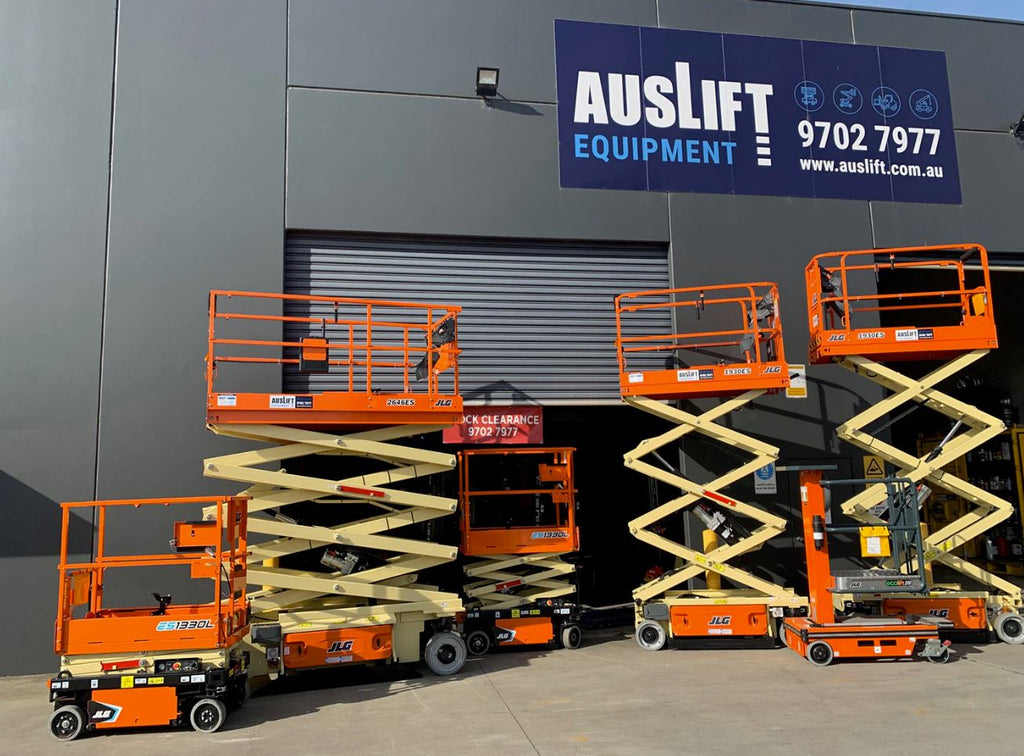
Learn How to Determine if Your Boom Lift or Scissor Lift Can Be Handled in Your Work Environment
If your work involves the use of aerial platforms, such as boom and scissor lifts, you have probably come across or heard of gradeability. For example, you may have seen this information on an equipment’s technical specifications, or even needed it to make a decision.
When working with equipment for handling heavy loads and transporting people to lofty heights, it is important to pay attention to the specific capabilities and limits of each piece of equipment and its attachments, for the safety of everyone in the work environment.
Speaking of limits, one of the safety measures that professionals must take is to always respect the limits that ensure the proper functioning of each piece of equipment. For example, boom and scissor lifts help to lift, position, workers and their tools. But do you know if and how they should be used in uneven sites and on slopes? If you don't know, find out now!
What is the definition of gradeability?
After all, what is gradeability? Put simply, gradeability is the maximum uphill or downhill grade (angle) at which you can drive a machine. Gradeability is important to know when you're driving your lowered machine into position on site. If you have a steep driveway or hill, you need to know whether or not the machinery is capable of traversing the terrain.
Please note this is different to the chassis angle limit which is how much of an incline the aerial lift can elevate on.
The device used for this type of calculation is the inclinometer. The inclinometer considers a maximum limit of inclination, blocking the lifting action of the basket or platform if it is outside the safe level. The gradeability, on the other hand, indicates, in percentages, the extent to which it is possible to go up and down ramps safely.
Gradeability: why it is important and when to calculate it
Safety in the workplace should always come first. For this reason, only qualified professionals, as per OH&S safety standards, who have read the manual for the equipment in question should be allowed to handle it. Remember that a platform with a boom lift or scissor lift can only be raised or extended on a level surface.
Specialists warn that many ill-trained operators do not have this basic knowledge. As a result, they may end up tipping over the equipment because they have not analysed all the characteristics of the terrain they are working on.
Therefore, regardless of the type of environment in which the workers will be working, it is always important to read the manual and understand how the equipment should be handled in that environment. If it is a slope or an uneven ground, calculating the gradeability is also essential.
Most aerial lifting equipment comes with slope warning systems and sensors. They will notify you if you go beyond the safe working bounds. Use the machinery only as directed by the manufacturer at all times. This system helps to ensure the safety of everyone on the job site.
Learn how to calculate the gradeability
For you to evaluate when one can drive a boom lift or scissor lift on a particular slope or ground, you will need to know what the gradeability is. And it turns out that this grade can be calculated in diverse ways: as an inclination to the horizontal, as a percentage of rise overrun; and as a ratio of one part run to some particular number of parts.
Here is a simple three-step process to do this calculation:
• Determine the slope rating
The easiest way to find the slope rating is by using an inclinometer, which you can easily download to your smartphone. There are many apps you can download for free.
• Determine the aerial lift’s gradeability
After you have found the grade of the slope you need to traverse, you will need to find the gradeability rating of the aerial lift. This information is available on the data plate or in the operator's manual.
• Compare the slope grade with the slope limit of the equipment
Finally, you will need to compare the measurement of the slope with the maximum slope of your boom or scissor lift. If the slope measurement exceeds the rating, you cannot drive the aerial lift on the slope.
It is particularly important that all professionals who are going to work with boom lifts and scissor lifts, including electric scissor lifts, know the capacity limits of each piece of equipment.
Now that you know what gradeability is, what it is used for, how important it is, and how to calculate it, share this content with your co-workers. You can never have too much information about workplace safety.


